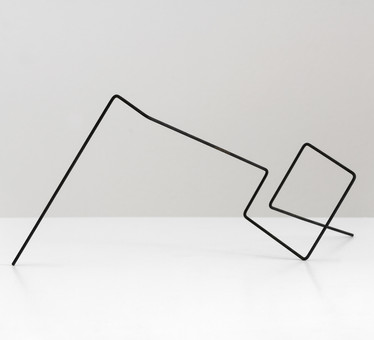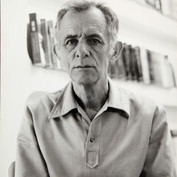Franz Weissmann

Knittelfeld, Austria, 1911 —
Rio de Janeiro, Brazil, 2005
“Art does not reproduce the visible, it makes it visible”. The well-known affirmation of the Swiss artist Paul Klee finds, in the work of Franz Weissmann, his sculptural instance. These are works that give the space a body that is both dense and impalpable, definitively presenting the sense of the idea of presence and opening up a new relationship between the public and the work of art.
Diverging from the teaching methods of the National School of Fine Arts, Franz Weissmann leaves the academy for the studio of the Polish sculptor August Zamoyski, where he remained between 1942 and 1944. In 1945, living in Belo Horizonte and influenced by the sculptural works of Rodin, Brancusi and Henry Moore, Weissmann explores the composition of massive figures, starting to recreate them in abstract language.
The power of such incursions in volume and essential form are updated in the work Cubo Vazado (1951), which Weissmann submits to the selection of the 1st Bienal de São Paulo. Already circumscribed in Concretism, structural rigor and subtle but well-defined volumetric suggestions from Cube Hollow reveal what Franz Weissmann calls “active emptiness”, which can be understood as the presentification of space by the vibration between matter and emptiness that, in a dialectical relationship , assert each other in harmonious opposition. Although rejected by the jury of the Bienal on the grounds of unsatisfactory technical finish, Cubo Vazado presents aspects that extended throughout the artist’s investigations and enshrined it, with emphasis on the modeling of the empty space from the volumetric arrangement of the material in compositions that are both meticulous as well as subjective, as in the work Três Cubos Virtuais (1954), and the fundamental role of the spectator’s reception of the work, as in Construção (1951).
In fact, the reflection on the reception of the work of art is crucial for Weissmann and marks the artist’s neo-concrete posture even before the official foundation of Neoconcretism by the 1959 manifesto, which he subscribed to. Such anticipation can be seen in works such as Espaço Circular and the iconic Neoconcrete Column, both from 1957. Enlarged, this issue takes on a public dimension. On several occasions, Weissmann stated that the ideal place for his works is the city, thought of as a space with wide access to an aesthetic experience that calls the spectator to the temporality of living with the work, inviting him to linger in it, attend it, even to enter it. As a result of this artist’s desire, in Praça da Sé, this painful heart of São Paulo, the work Diálogo (1979) remains firm, light and red; a utopian flame of the senses which, as written by João Cabral de Melo Neto in commentary to Weissmann’s work, radiates in its surroundings the “space of a world of clean and healthy / therefore / fair light”.
GGS
Franz Weissmann: “Between the Material and the Spiritual”
DAN GALERIA and DAN GALERIA INTERIOR present the solo exhibition of Franz Weissmann, a precursor of constructivism in Brazil. The exhibition is curated by the artist's Institute and is open from November 30, 2021 to January 29, 2022.
Exhibition "Line, Color and Movement"
We present Line, Color and Movement. Dan Galeria's new online collection exhibition.
Dan Galeria in the project "Arte em Campo"
Dan Galeria participates in the project “Arte em Campo” with works by Amilcar de Castro, Franz Weissmann and José Spaniol.
